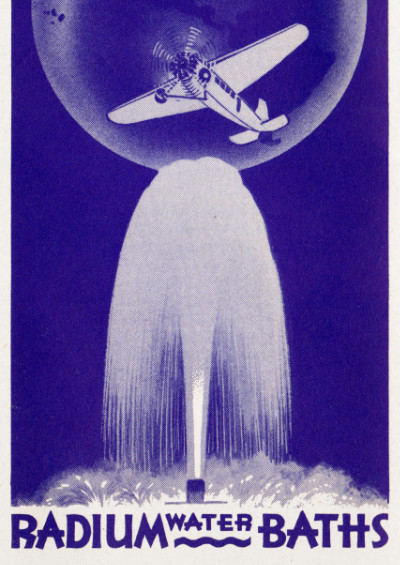
Radiation isn’t the best thing to take a bath in if you expect to have a long life, but things that are obvious now weren’t so cut-and-dry when they were first discovered. People still bang on about crystals and magnetism and quantum physics as if they’ll cure you of your shingles — as if we don’t know how those things really work. Radium has since earned a negative reputation, but when it first came to the public’s attention in the 1910s people thought it was good for what ails ya. It’s part of why I love the 1920s so much and chose to set my novel Radium Baby in 1927 — people thought radioactivity was magic.
So much has been written about the Curies, who first discovered radium, or about the “Radium Girls” who painted radioactive paint onto watch dials, but the radium fever went further. In the 1920s and 30s there was a craze for radioactive products, from radium water tonics to radioactive jockstraps, suppositories, and catheters. I’m surprised anyone lived to see 1940, to be honest.
One of the many radioactive gimmicks available was the radium bath. You could go to a small town in Oklahoma to take a dip in radium broth and get cured of whatever was wrong with you — “Radium Water Bath Will Improve Your Health — Recommended for rheumatism, stomach trouble, eczema and other skin diseases.” That town was Claremore.
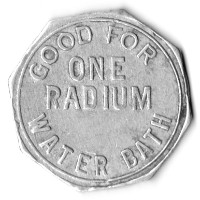
When I was writing Radium Baby I collected a lot of ephemera from Claremore advertising their radium baths. Bizarrely enough one bath house actually published the chemical content of their water and revealed that their baths didn’t contain a single radioactive element. The radium in their baths was fake, but the fact they wanted to ride the coat-tails of the radium craze should tell you how popular it was. The water in Claremore was, in reality, from mineral springs that contained a concoction of salts and sulfides that contributed to the baths’ notorious smell. The locals were used to it but it was an unexpected assault on the nostrils of newcomers.
Will Rogers grew up near Claremore and wrote about those baths with wild adoration:
Now, if you are living in the South and are afflicted with a Cotton Crop under a Republican Administration, or with the Ku Klux or with the Hook Worm, we guarantee to rid you of either or all of these in a course of 21 baths.
…
In the early days, us old timers there, always considered these Wells more as an Odor than as a Cure. But one day a man come in there who had been raised in Kansas and he had heard in a roundabout way of people bathing, although he had never taken one. So, by mistake, he got into this Radium Water.
He was a one armed man—he had lost an Arm in a rush to get into a Chautauqua Tent in Kansas to hear Bryan speak on Man Vs. Monkey. Well he tried this Bath and it didn’t kill him and he noticed that he was beginning to sprout a new arm where he had lost the old one, so he kept on with the Baths and it’s to him that we owe this discovery of this wonderful curative Water.
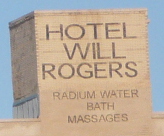
Will Rogers may well have been biased — Claremore was his home town and he did lend his name to a hotel offering radium baths. The hotel is still standing and you can see an old ad for the baths painted on its side, but the Hotel Will Rogers was only one of dozens in the area. The most beautiful was the bizarrely neo-Classical Radium, which you can see in the old postcards below. The one for the Hotel Will Rogers even gives a tantalizing glimpse of life inside the baths on their top floor.
If I had a time machine and could travel to any time in the past, I hope you’ll understand why my first stop would be the 1920s — and why I’d avoid the baths.
Gallery
-
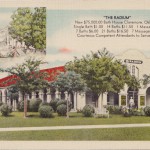
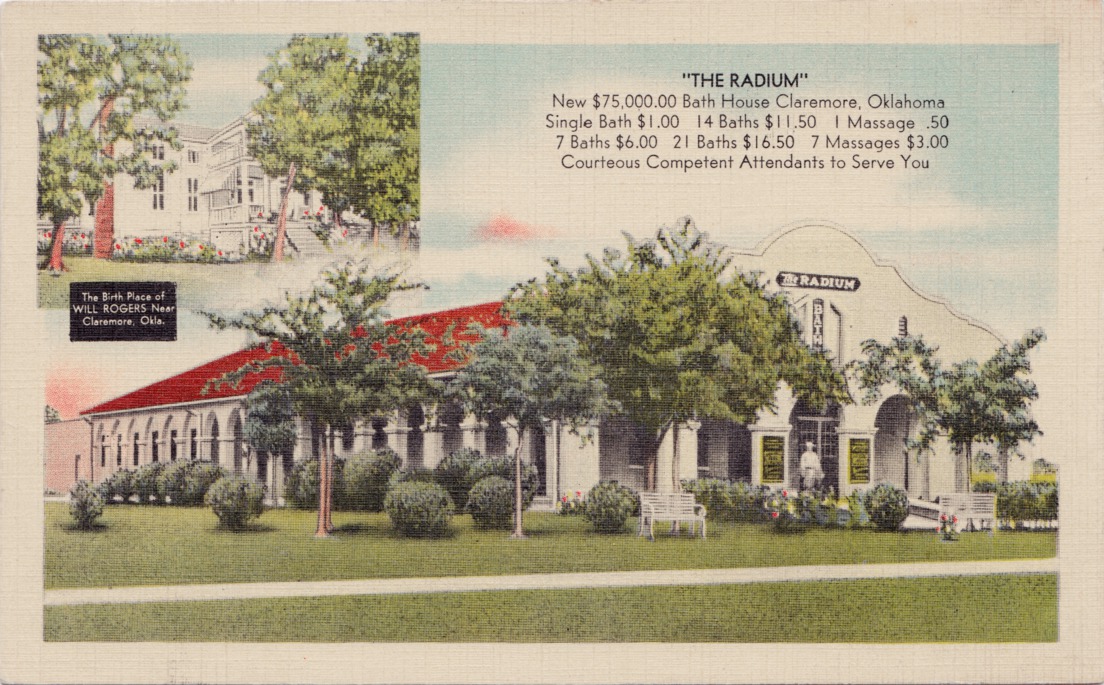
The Radium -
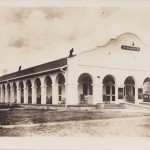
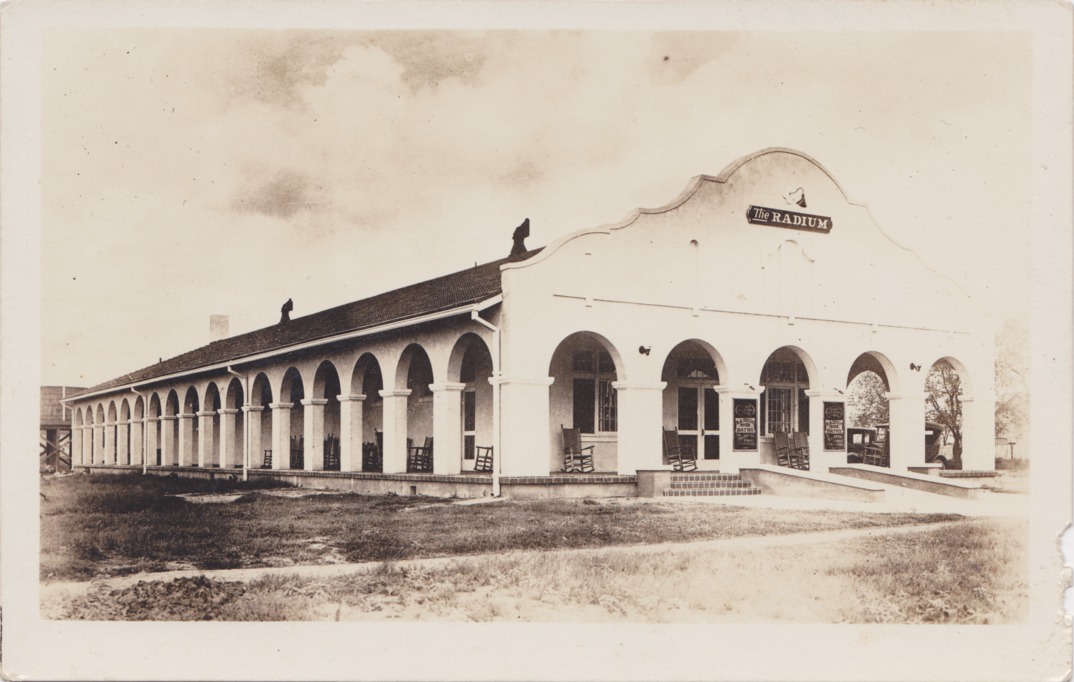
The Radium (photo card) -
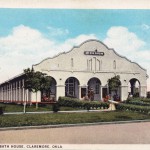
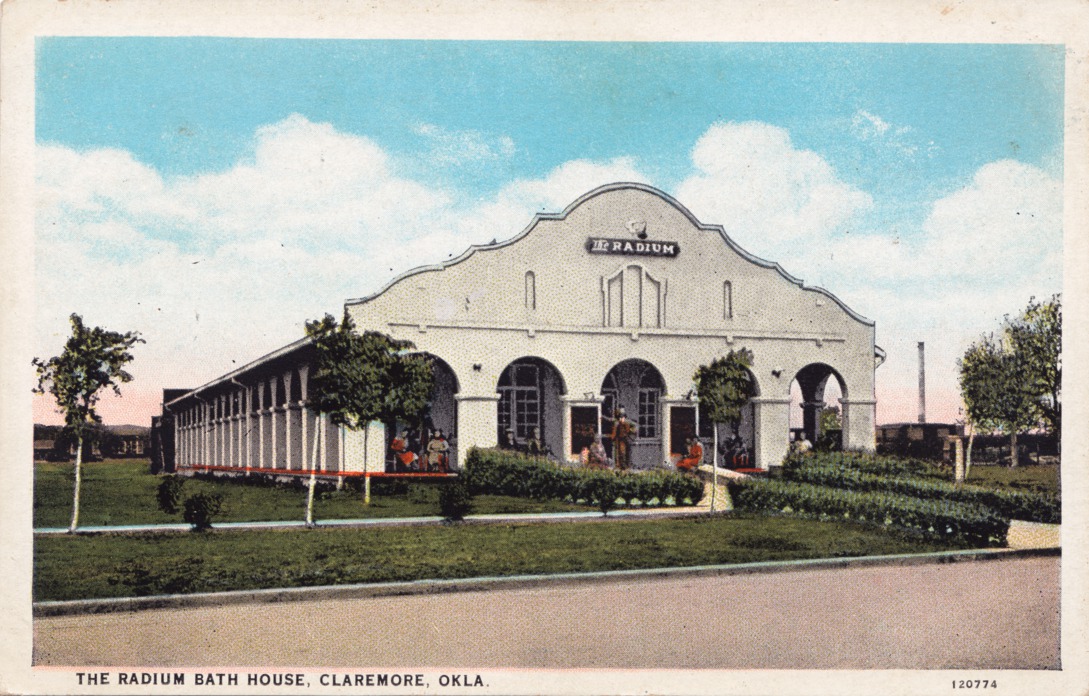
The Radium Bath House, Claremore, Oklahoma -
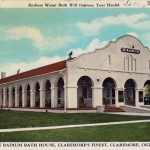
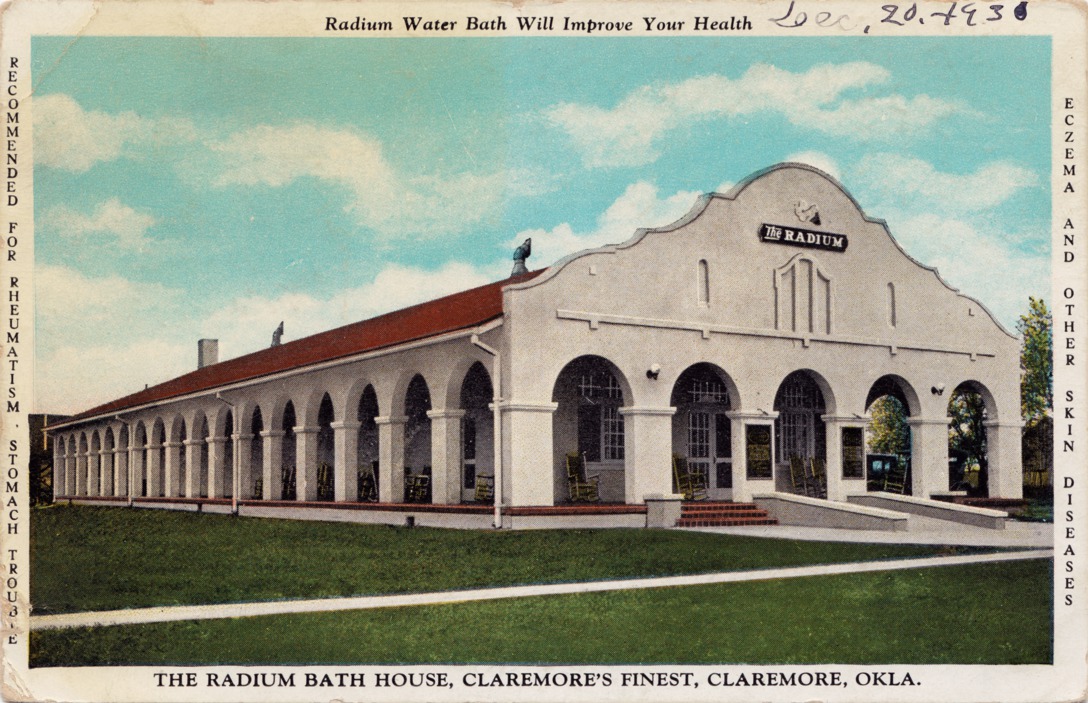
The Radium Bath House, Claremore’s Finest -
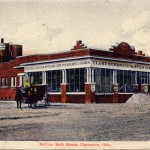
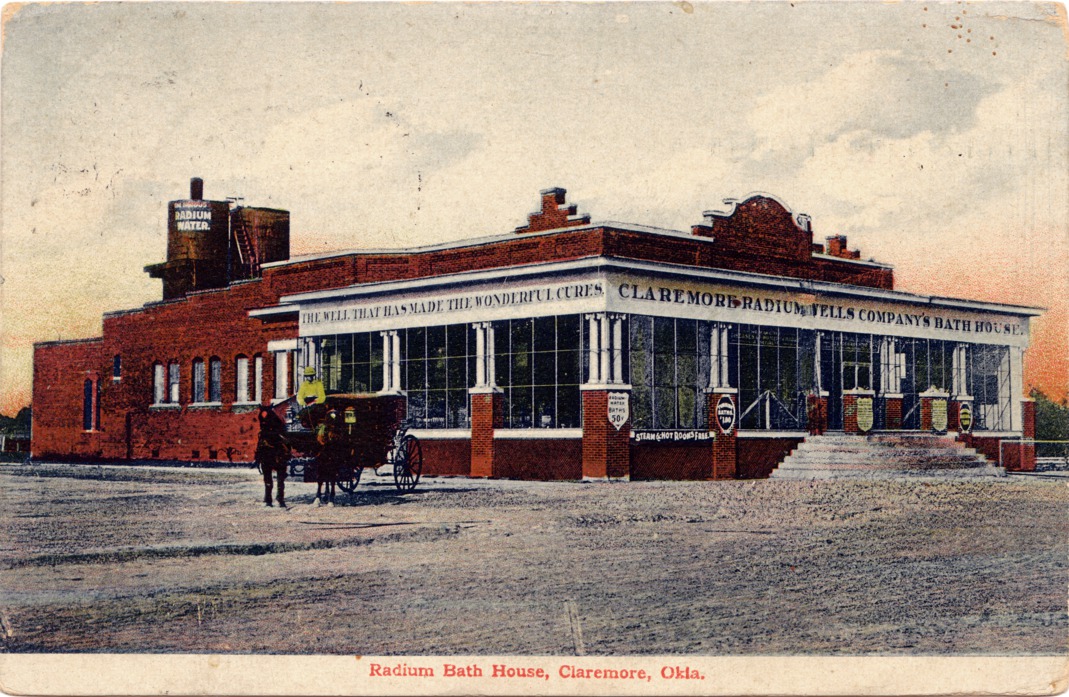
Claremore Radium Wells Company’s Bath House -
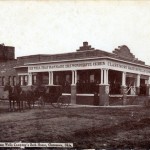
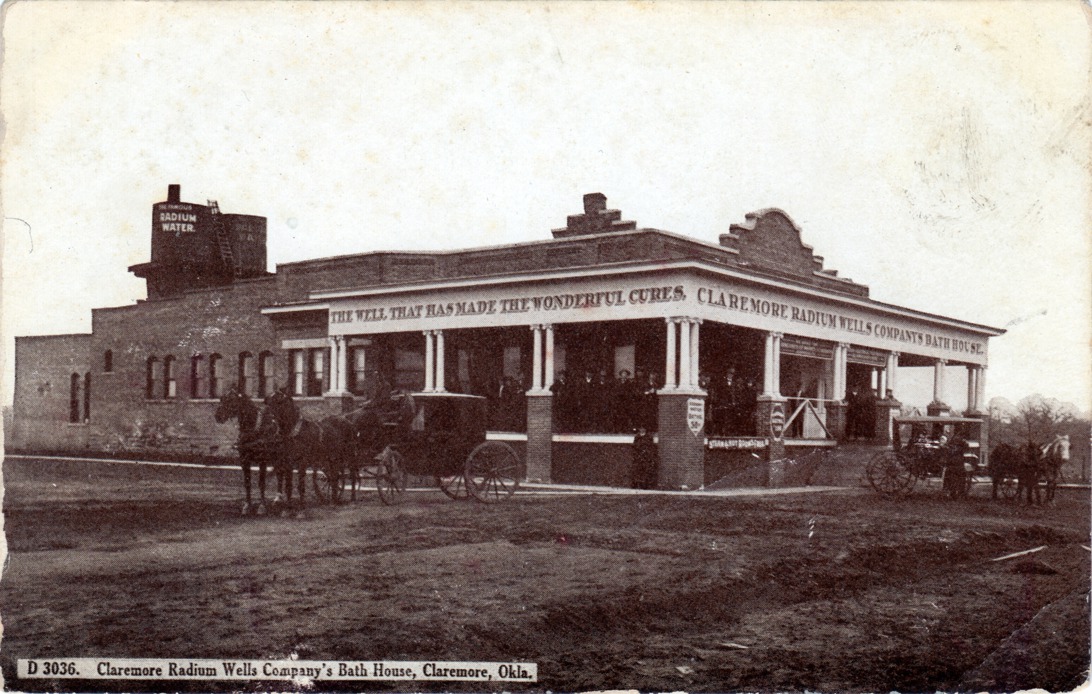
Claremore Radium Wells Company’s Bath House -
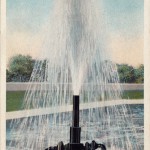
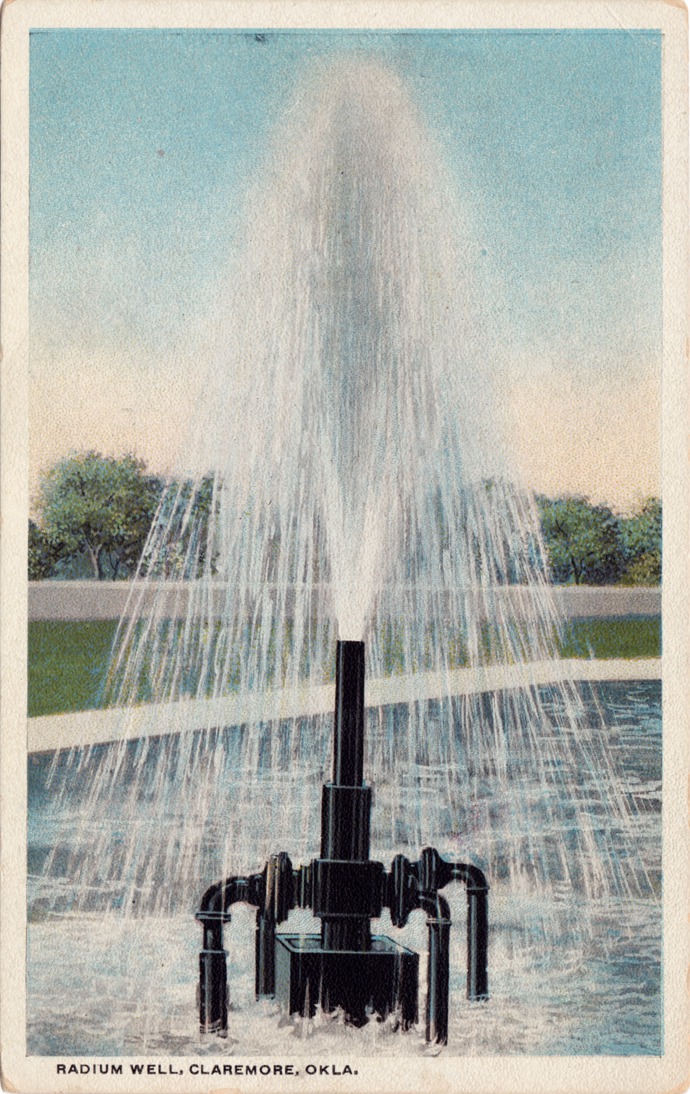
Radium Well, Claremore, Oklahoma -
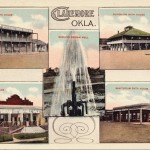

Claremore Montage -
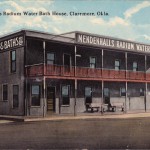
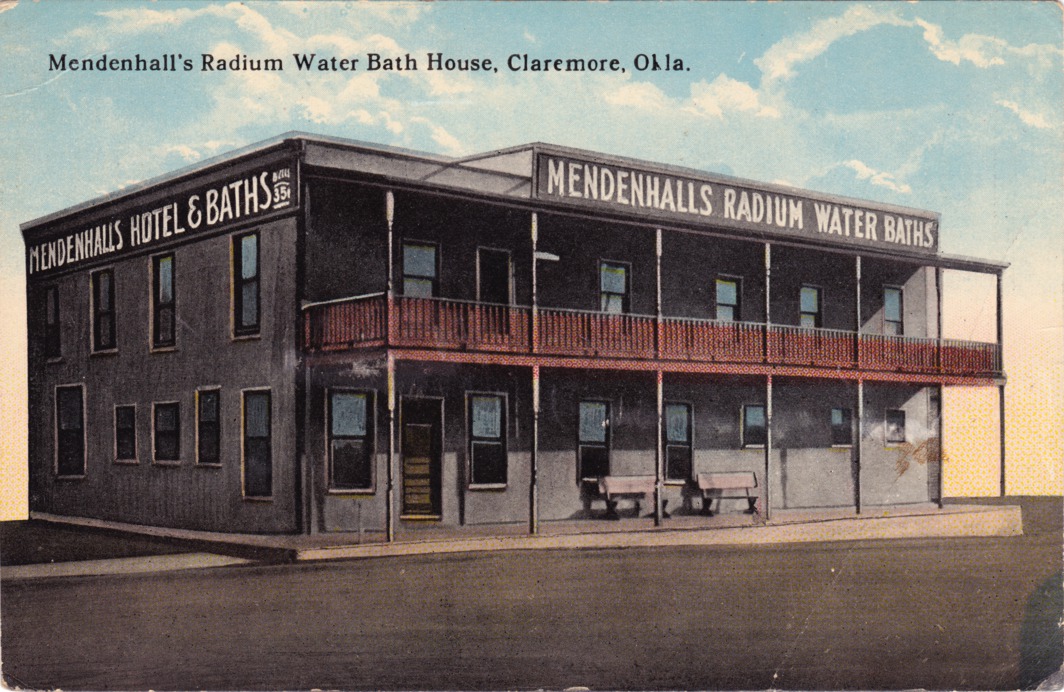
Mendenhall’s Radium Water Baths -
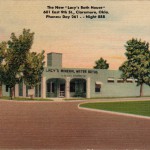
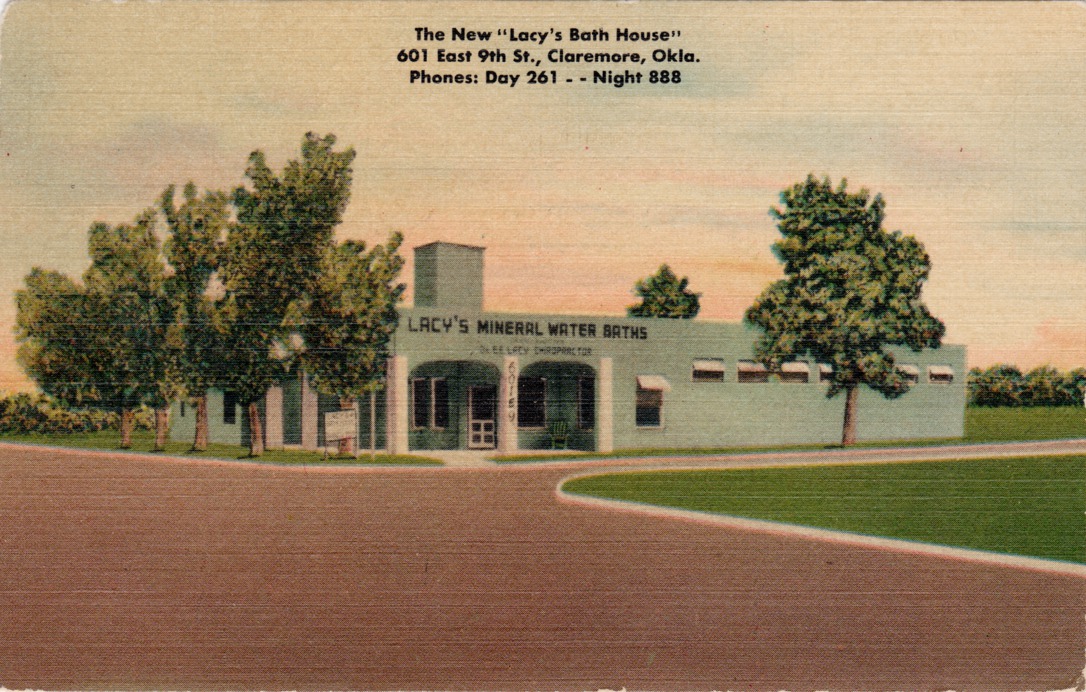
Lacy’s Bath House -
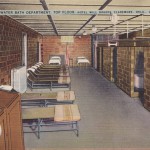
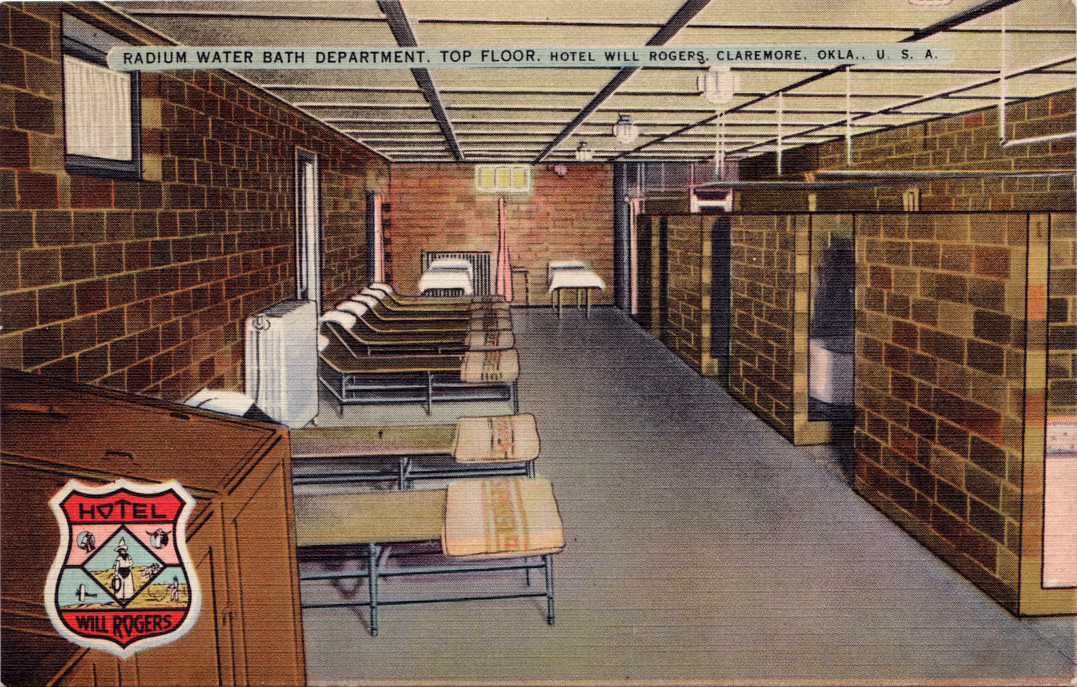
Hotel Will Rogers (Radium Water Bath Department) -
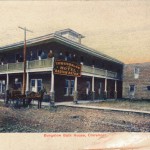
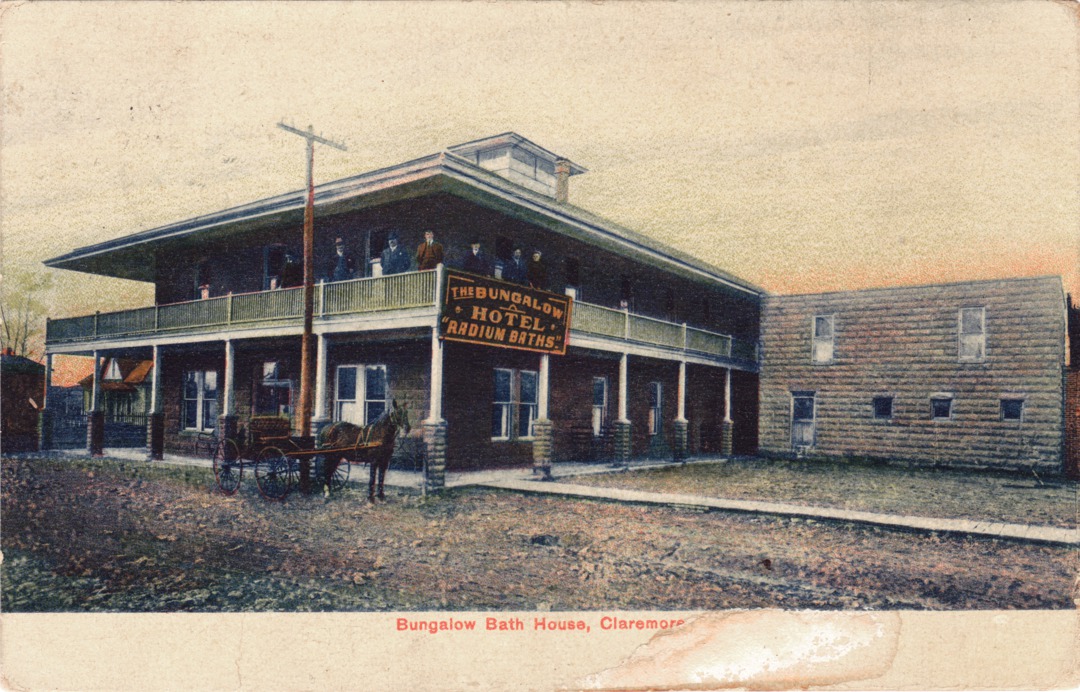
The Bungalow Bath House, Claremore -
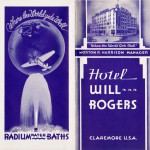
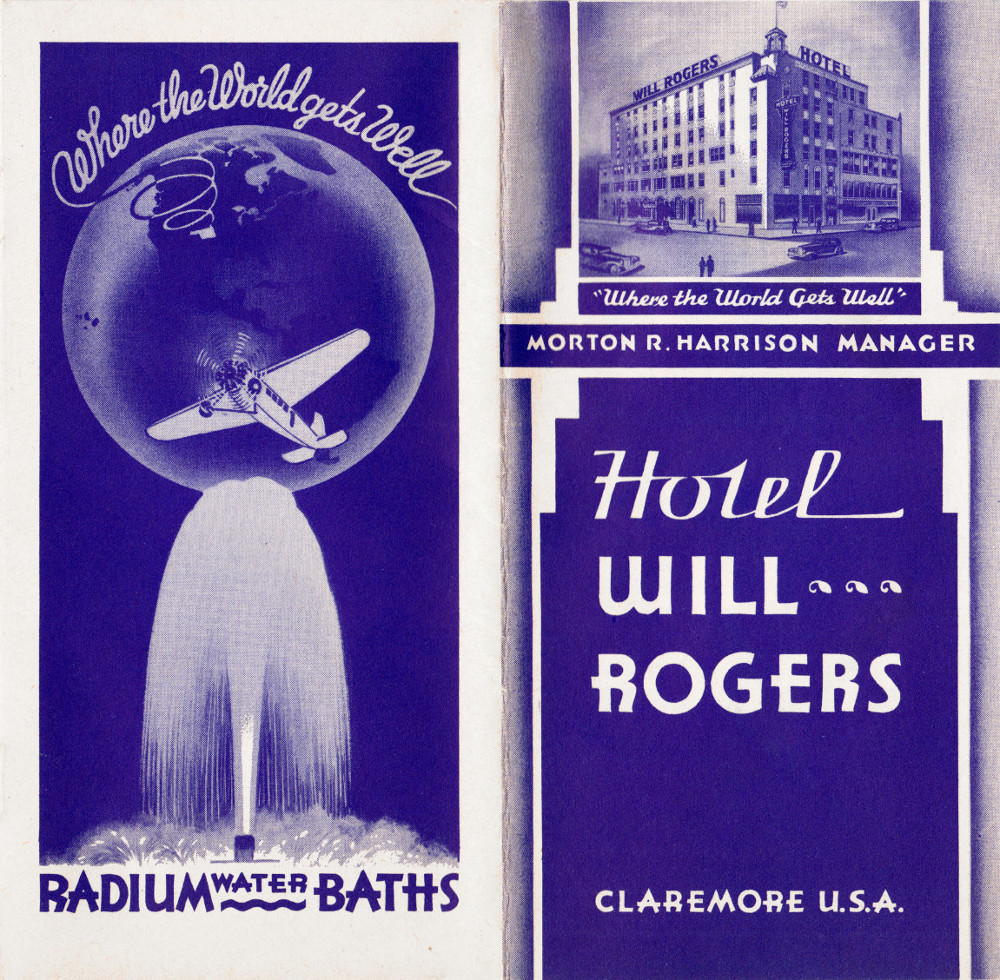
Pamphlet for the Hotel Will Rogers (‘Where the World gets Well’) -
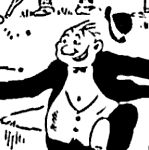
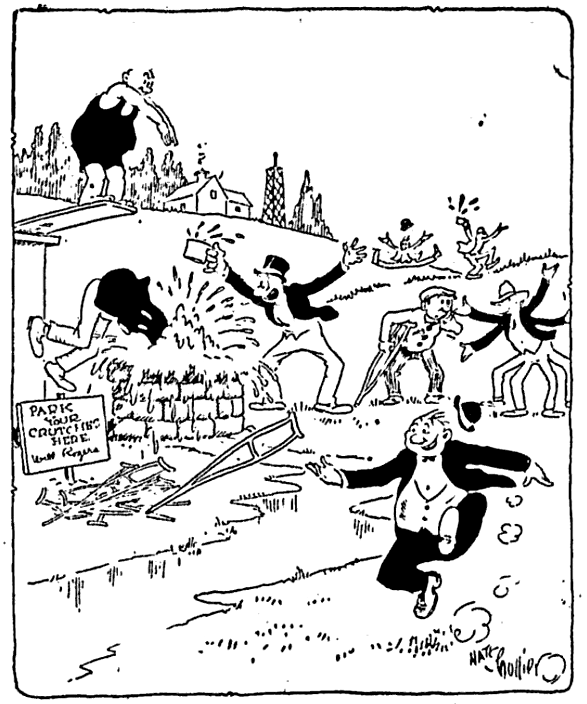
Park Your Crutches Here — Will Rogers
Bibliography
- Rogers, Will. “Taking the Cure, by Shores of Cat Creek”. The Youngstown Vindicator 29 July 1923, 3. Print.